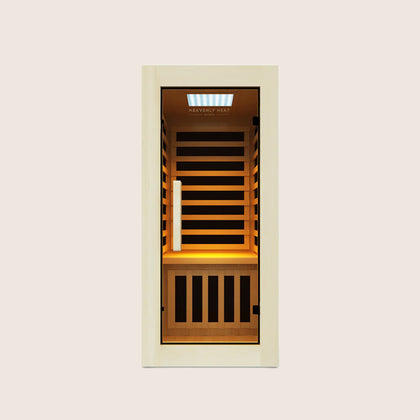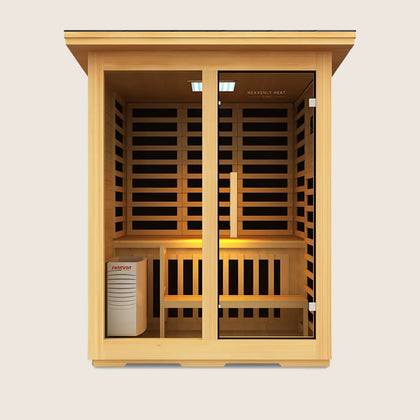Can I Use Pool Shock in My Hot Tub? What You Need to Know

Thinking of using pool shock in your hot tub? Hold on! Hot tubs need gentler, specially designed shock treatments to keep water safe and clean.
Using the wrong chemicals can irritate your skin, damage equipment, and even void warranties.
In this guide, you’ll learn exactly what to use, why it matters, and how to keep your soak worry-free.
Key Takeaways
Use the Right Shock: Always choose shock products specifically designed for hot tubs.
Avoid Pool Shock: Pool shock is too strong for small hot tubs and can cause irritation or damage.
Regular Maintenance Matters: Shock your hot tub weekly, or more often with heavy use, to keep water clean.
Follow Proper Dosages: Measure carefully and maintain balanced pH and alkalinity for safe, effective results.
Protect Yourself and Your Tub: Using the correct shock prevents skin irritation, equipment damage, and warranty issues.

Can I Use Pool Shock in My Hot Tub?
Pool shock and hot tub shock are not interchangeable. Pools typically use calcium hypochlorite shock, which must be added at night because it’s unstable in sunlight, while hot tubs rely on non-chlorine shock that’s safe to use anytime and allows immediate use without skin irritation.
The Centers for Disease Control and Prevention recommend regular biocidal shock treatments for hot tubs based on water quality and usage.
However, using pool shock in a hot tub can be risky because it often contains higher chlorine concentrations than what’s safe for smaller, enclosed hot tub systems.
This can cause severe skin and eye irritation, respiratory issues, chemical burns, and even damage the tub’s equipment.
Over-chlorination also leads to unpleasant chloramine build-up, worsening discomfort. For your safety and to protect your hot tub, always use shock products specifically designed for hot tubs, follow manufacturer instructions closely, and apply shock treatments after soaking to minimize exposure.
What Is Hot Tub Shock?
Hot tub shock is a water treatment process that involves adding a concentrated dose of oxidizing chemicals, such as chlorine or non-chlorine shock, to break down organic contaminants and restore water clarity.
Originally developed to sanitize and refresh heavily used spa water, it works by eliminating bacteria, oils, and residues that regular sanitizers may miss.
Beyond keeping water clean and clear, shocking also helps reduce unpleasant odors and prolong the effectiveness of routine sanitizing treatments.
How Often to Shock a Hot Tub?
Experts recommend shocking your hot tub regularly, anywhere from daily to weekly, depending on how often you use it and your water quality.
Before refilling, it’s also important to clean or replace your filter media based on the filter type.
Over time, your sanitizer, like chlorine or bromine, loses effectiveness, so shocking the water reactivates these chemicals, helping to kill bacteria without needing to add more sanitizer.
Environmental factors like humidity can also play a role: dry air can increase static electricity, which doesn’t directly affect your hot tub but is a good reminder that air quality and moisture levels impact your water balance too.
In humid conditions, moisture helps reduce buildup, making it easier to maintain clean water.
Overall, keeping your hot tub water fresh means balancing regular shocking with proper filter care and paying attention to how often you use it and the surrounding environment.
How to Shock a Hot Tub?
Shocking a hot tub means adding a strong dose of chemicals, usually chlorine or a non-chlorine oxidizer, to clean the water by removing contaminants like bacteria, oils, and dead skin.
This process is essential because it reactivates the sanitizer in the water, breaks down organic waste, clears cloudy water, and eliminates unpleasant odors caused by chloramines.
For regular maintenance, it’s best to shock your hot tub at least once a week. If your tub sees heavy use or the water looks cloudy, you might need to shock it more often.
Typically, about 35-40 grams of shock per 1500 liters of water works well, but always follow the instructions on your product.
Keeping the water balanced with proper pH and alkalinity helps the shock work effectively and keeps your soak inviting and safe.
Regular shocking not only improves water quality but also helps prevent biofilm buildup and extends your hot tub’s life.
Differences between Pool Shock vs Spa Shock
Purpose and Usage: Pool shock is mainly used for larger swimming pools to kill bacteria, algae, and contaminants, while spa shock is designed for smaller hot tubs or spas to keep the water fresh and safe.
Chemical Composition: Pool shock often contains higher amounts of chlorine or non-chlorine oxidizers, whereas spa shock is specially balanced for hot water and smaller systems.
Strength and Concentration: Pool shock is stronger and more concentrated to handle bigger water volumes, while spa shock is milder but still effective in hot, high-use environments.
Dosage and Application: Pool shock requires larger doses spread across the pool, while spa shock needs smaller, carefully measured doses due to the limited water volume.
Water Volume Considerations: Pools hold thousands of gallons, so pool shock is made for that scale. Spas only hold a few hundred gallons, so spa shock is formulated to avoid over-treatment.
Safety and Handling: Pool shock can be more hazardous to store and handle due to its high strength, while spa shock is easier to use but still requires care.
Effect on Water Quality: Both improve water clarity and cleanliness, but pool shock targets larger contamination loads, while spa shock focuses on maintaining balance in hotter, smaller water systems.
Alternatives to Pool Shock for Hot Tubs
Alternatives to pool shock for hot tubs include non-chlorine shock like potassium monopersulfate, bromine, hydrogen peroxide, PHMB, UV light, and enzyme treatments.
These options oxidize contaminants, sanitize, and reduce odors, though some may require supplementation, proper water balance, or periodic draining when replacing chlorine systems.
FAQ
Can pool shock cause skin irritation in hot tubs?
Yes, pool shock containing chlorine can cause skin irritation in hot tubs, especially at high concentrations or unbalanced pH. Symptoms include redness, itching, dryness, rashes, and inflammation. Prevent irritation by testing water chemistry, using sanitizer sparingly, rinsing afterward, and applying a soothing body wash.
Can pool shock throw off hot tub pH levels?
Yes, pool shock can temporarily affect hot tub pH. Chlorine-based shock often raises pH, while non-chlorine shock may initially lower it. Always run jets, wait for reactions to subside, then test and adjust pH to the safe 7.2–7.6 range before use.
Can pool shock bleach hot tub surfaces?
Yes, pool shock can bleach hot tub surfaces, especially older plastic shells and accessories, because concentrated chemicals like calcium hypochlorite can discolor or damage materials. Use spa-specific or pH-neutral shocks like dichlor or non-chlorine alternatives, and circulate water immediately if pool shock is added.
Can using pool shock void a hot tub warranty?
Using pool shock in a hot tub can void the warranty because its higher acidity, cyanuric acid content, and chemical formulation can damage the acrylic shell, pumps, and plumbing. Manufacturers cover defects, not misuse, so only hot tub-specific shocks should be used to maintain water safety and warranty coverage.
Can pool shock get rid of hot tub foam?
Yes, pool shock can eliminate hot tub foam if you use a spa-specific or non-chlorine shock. Shocking oxidizes oils, lotions, and other organic contaminants, reactivates sanitizer, and, combined with clean filters, balanced water chemistry, and occasional draining, effectively prevents persistent foam without damaging equipment.
Can pool shock remove hot tub odors?
Yes, hot tub shock can remove odors by oxidizing chloramines and contaminants, killing bacteria and algae, and restoring sanitizer levels. For persistent smells, test water chemistry, use the appropriate shock type, address biofilm with a line flush, and consider a full drain and refill.






























